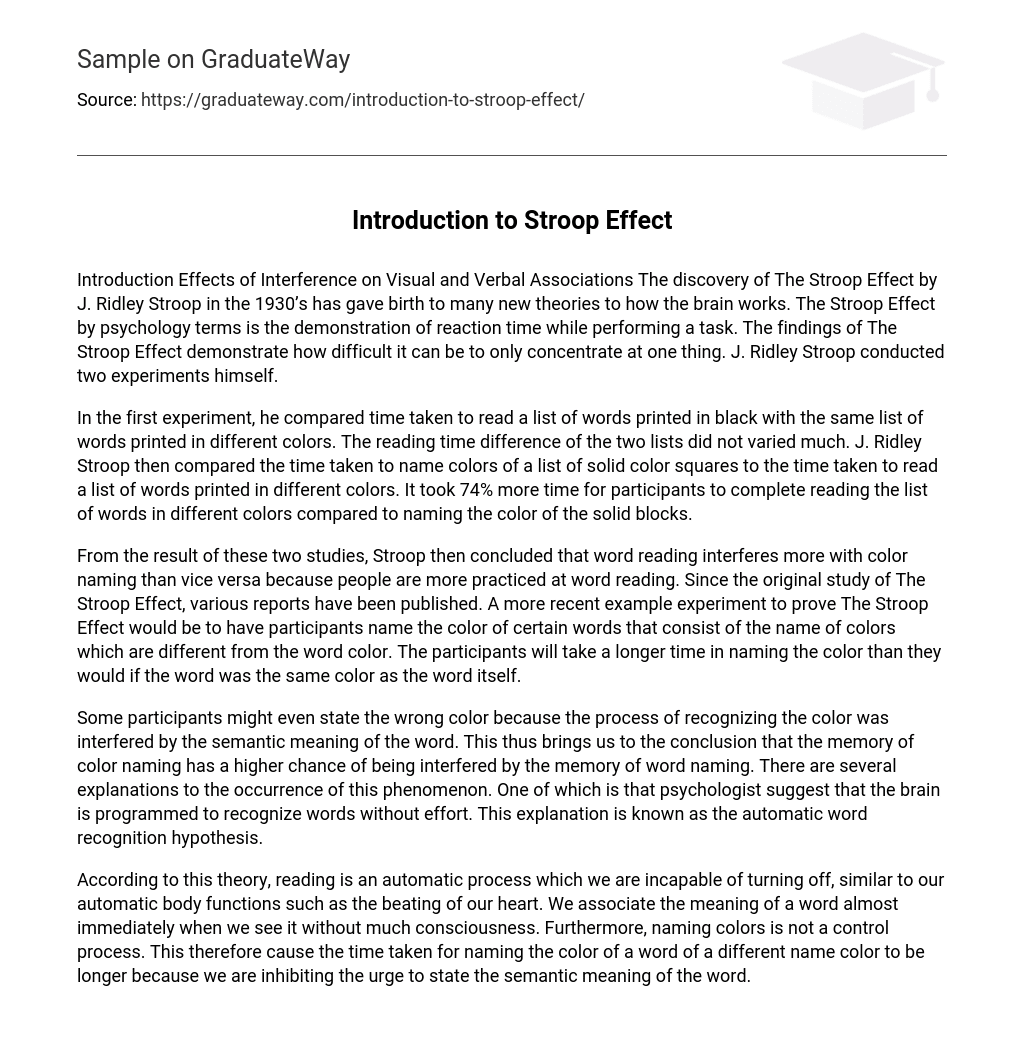Introduction Effects of Interference on Visual and Verbal Associations The discovery of The Stroop Effect by J. Ridley Stroop in the 1930’s has gave birth to many new theories to how the brain works. The Stroop Effect by psychology terms is the demonstration of reaction time while performing a task. The findings of The Stroop Effect demonstrate how difficult it can be to only concentrate at one thing. J. Ridley Stroop conducted two experiments himself.
In the first experiment, he compared time taken to read a list of words printed in black with the same list of words printed in different colors. The reading time difference of the two lists did not varied much. J. Ridley Stroop then compared the time taken to name colors of a list of solid color squares to the time taken to read a list of words printed in different colors. It took 74% more time for participants to complete reading the list of words in different colors compared to naming the color of the solid blocks.
From the result of these two studies, Stroop then concluded that word reading interferes more with color naming than vice versa because people are more practiced at word reading. Since the original study of The Stroop Effect, various reports have been published. A more recent example experiment to prove The Stroop Effect would be to have participants name the color of certain words that consist of the name of colors which are different from the word color. The participants will take a longer time in naming the color than they would if the word was the same color as the word itself.
Some participants might even state the wrong color because the process of recognizing the color was interfered by the semantic meaning of the word. This thus brings us to the conclusion that the memory of color naming has a higher chance of being interfered by the memory of word naming. There are several explanations to the occurrence of this phenomenon. One of which is that psychologist suggest that the brain is programmed to recognize words without effort. This explanation is known as the automatic word recognition hypothesis.
According to this theory, reading is an automatic process which we are incapable of turning off, similar to our automatic body functions such as the beating of our heart. We associate the meaning of a word almost immediately when we see it without much consciousness. Furthermore, naming colors is not a control process. This therefore cause the time taken for naming the color of a word of a different name color to be longer because we are inhibiting the urge to state the semantic meaning of the word.





